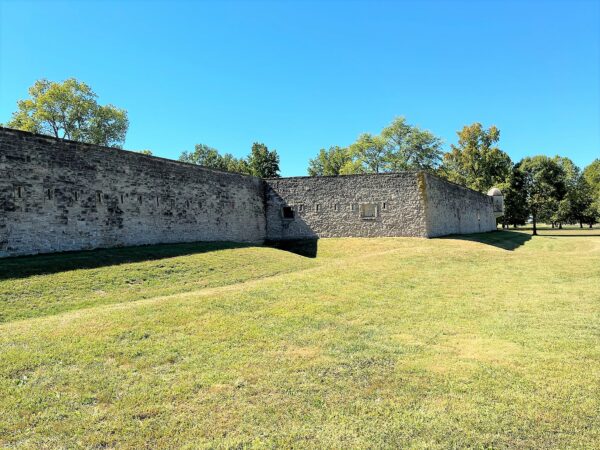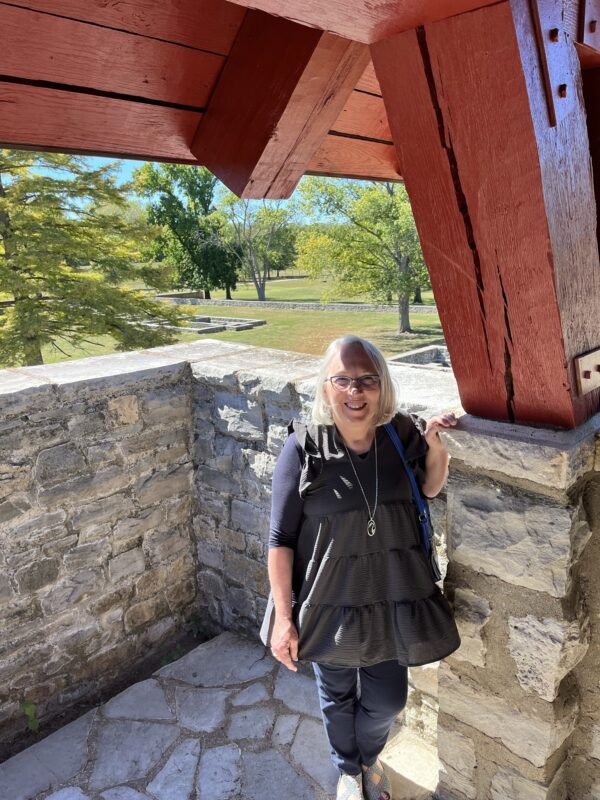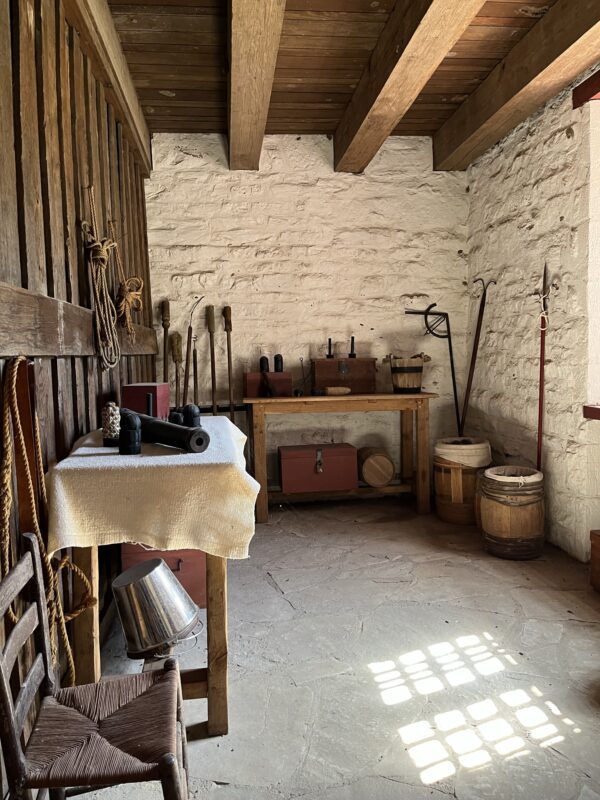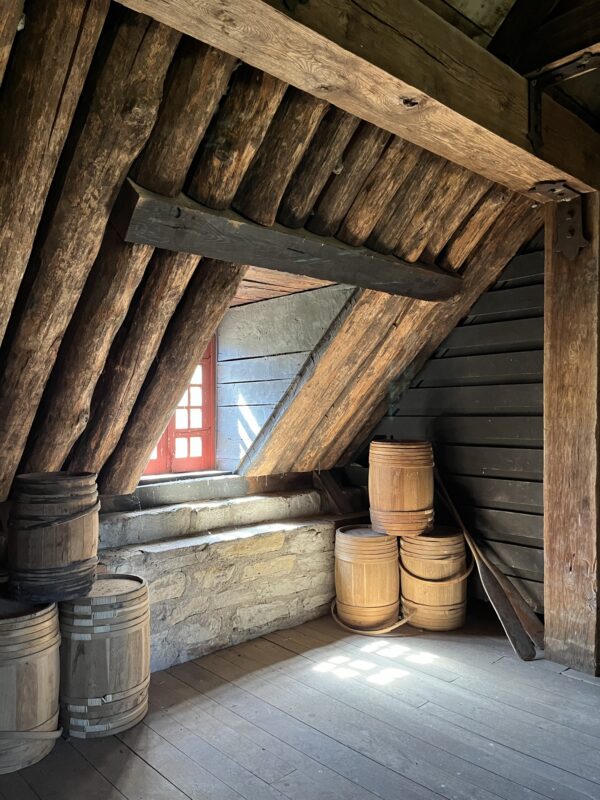A Fortress That Will Never Fall
Among the many strengths of homeschooling are extra opportunities to shield children from what Ephesians 6:16 calls “all the flaming arrows of the evil one.” Ephesians 6 warns us about the schemes of the devil, of the world forces of darkness, and of the spiritual forces of wickedness in the heavenly places.
Some people accuse homeschooling parents of being overly protective. Perhaps some parents are overprotective, but many parents are not protective enough. Protection is a Biblical idea. God hasn’t left us defenseless. He has given us His full armor; Ephesians 6:10-17 tells us to wear it. This passage speaks of girding our loins with truth, putting on the breastplate of righteousness, and shodding our feet with the preparation of the gospel of peace. It tells us to take up the shield of truth, the helmet of salvation, and the sword of the Spirit, which is the word of God. Wise parents take advantage of the armor God has given to us; wise parents help their children to put that armor on, too.
God offers to be our fortress.
“I love You, O Lord, my strength.”
The Lord is my rock and my fortress and my deliverer,
My God, my rock, in whom I take refuge;
My shield and the horn of my salvation, my stronghold.
Psalm 18:1-2
During our trip to Sainte Genevieve, Missouri, and Kaskaskia, Illinois, our group visited Fort de Chartres near Prairie Du Rocher, Illinois.
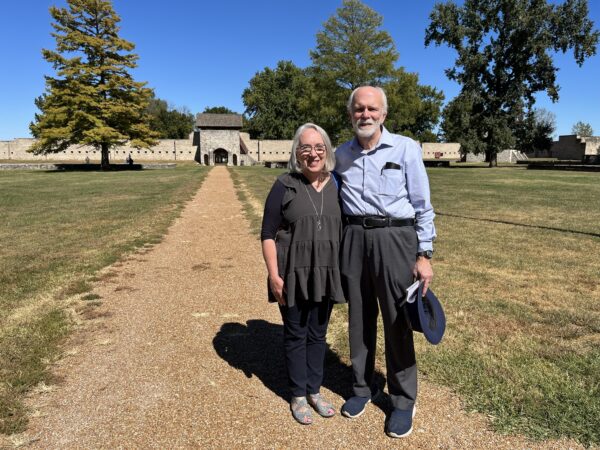
Before the American Revolution, the English, French, and Spanish governments all built forts in America. The French began building Fort de Chartres on this site in the early 1700s. By the end of the 1750s, the fort covered about four acres. Its 15-foot-tall walls were two feet thick at the top and three feet thick at the bottom. The fort’s walls had four bastions. A powder magazine, bakehouse, and prison stood in three of them. Six buildings stood inside the fort: a storehouse, two barracks, a house for the commandant, a government house, and a guard house.
Fort de Chartres served as the main military post and the seat of government for French settlements in the region. British troops occupied the fort after the British victory in the French and Indian War. British occupation continued until 1772 when the changing course of the Mississippi River caused one of the fort’s walls to collapse.
The remaining walls and buildings of Fort de Chartres deteriorated over time. By the 1920s, only the powder magazine remained standing. Several structures were reconstructed during the 20th century. In 1960 Fort de Chartres became a National Historic Landmark. The site was added to the National Register of Historic Places in 1976.
Portions of the fort’s walls, reconstructed in 1989
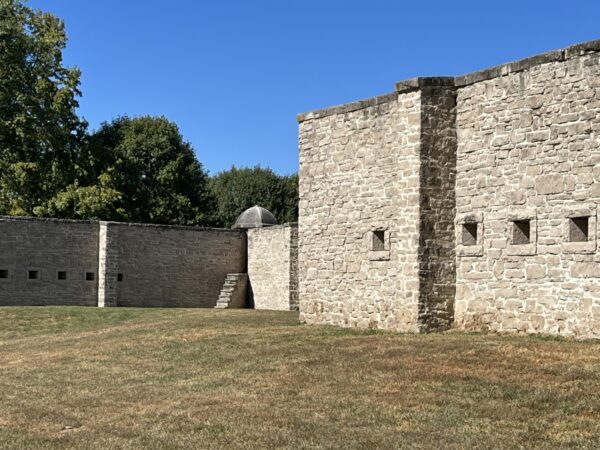

Members of the Timothy Demonbruen Heritage Society tour group in front of the gate house, reconstructed in the 1930s by the WPA
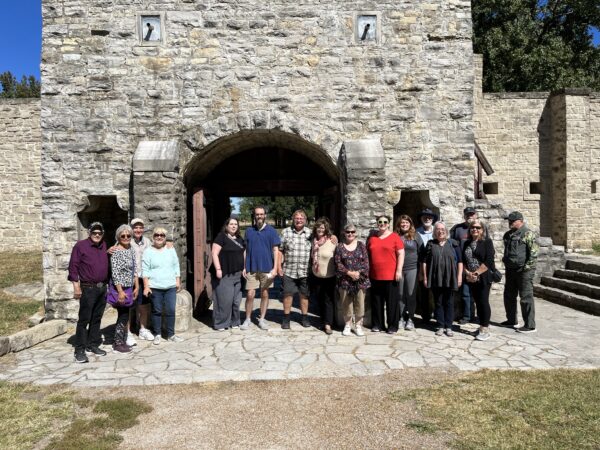
Detail of the gate house both on the ground level and on the top
Restored powder magazine

View of powder magazine from atop the gate house
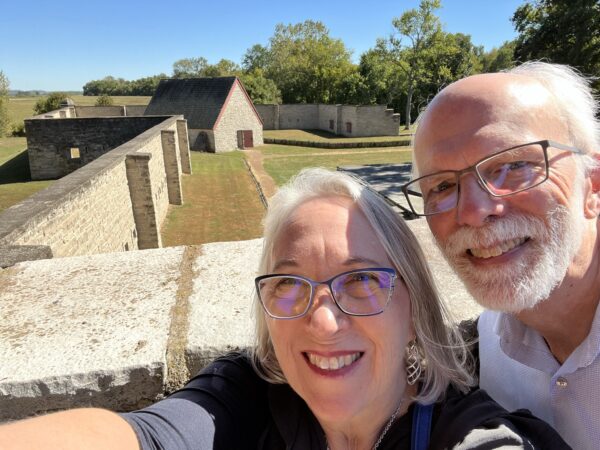
Guard house, built in 1936

Catholic chapel in the guard house, furnished in the French style of the 1750s
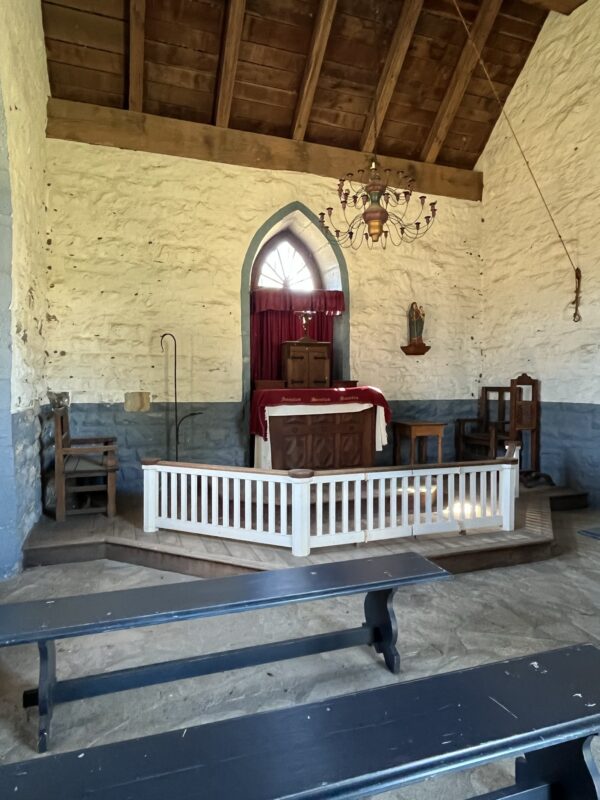
Priest’s room in the guard house

Other rooms in the guard house

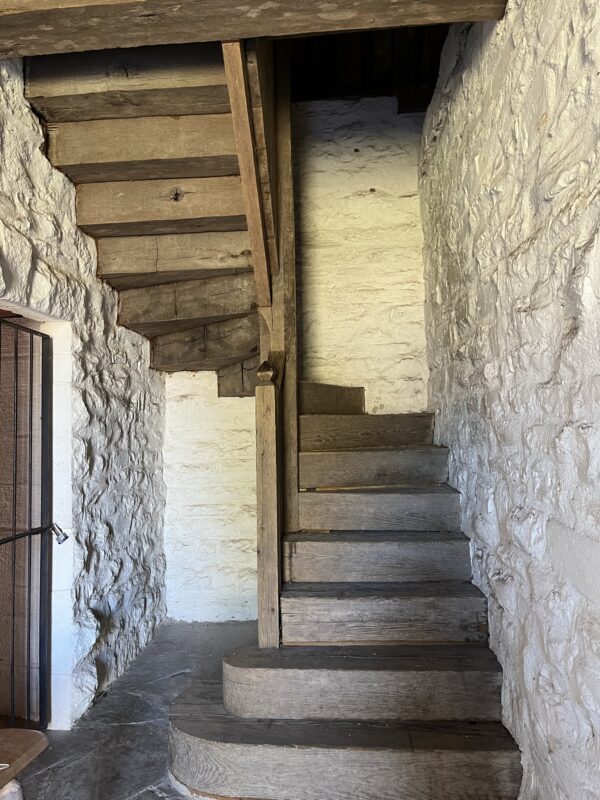
Attic in the guard house
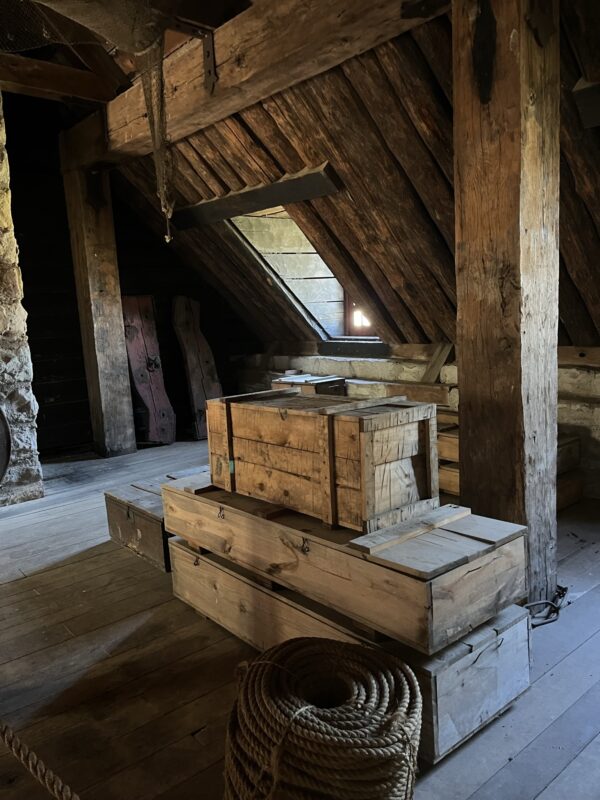
Bake oven and garden

Combination museum and office building, built in 1928 on the foundation of one of the original fort buildings
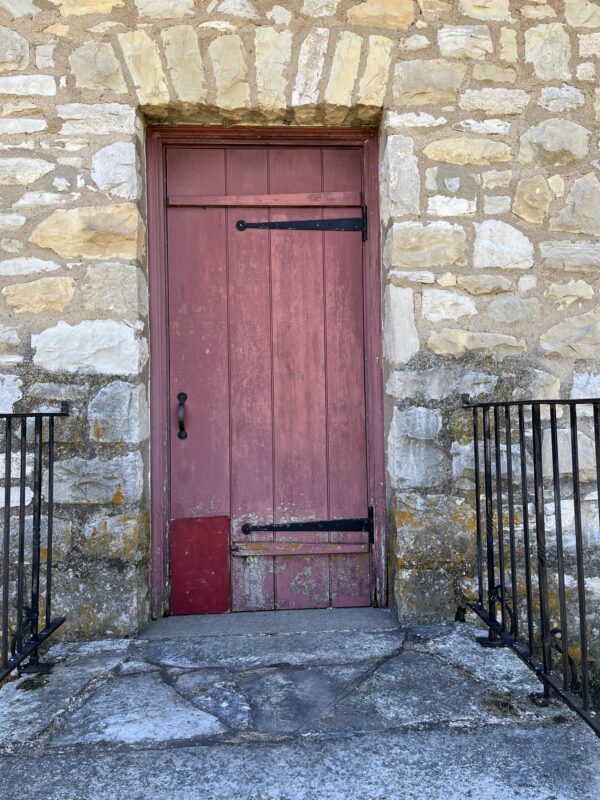
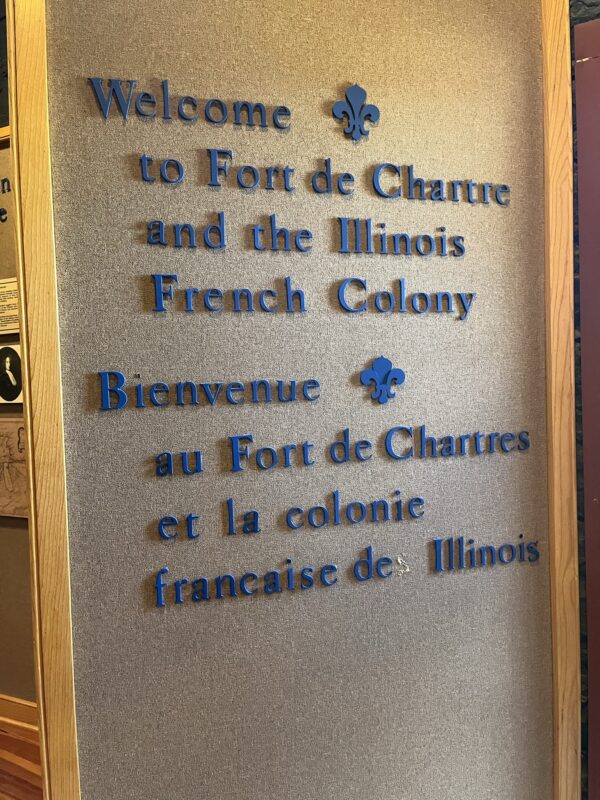
Praise God that He provides us and our children with the fortress of Himself, a fortress that will never fall.
He who dwells in the shelter of the Most High
Will abide in the shadow of the Almighty.
I will say to the Lord, “My refuge and my fortress,
My God, in whom I trust!”
Psalm 19:1-2
All photos taken at Fort de Chartres State Historic Site, near Prairie du Rocher in Randolph County, Illinois.


